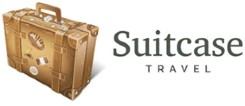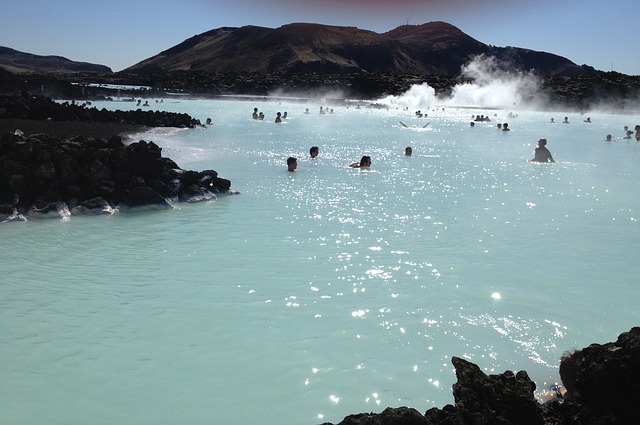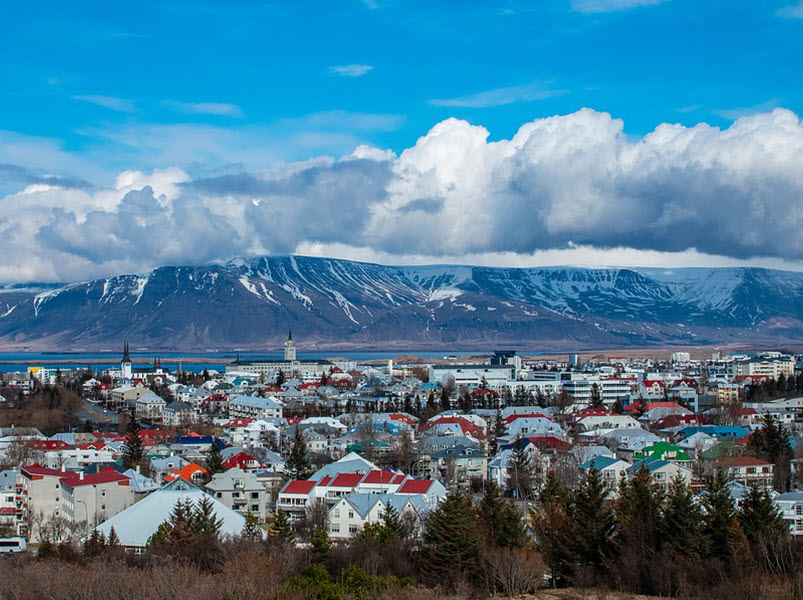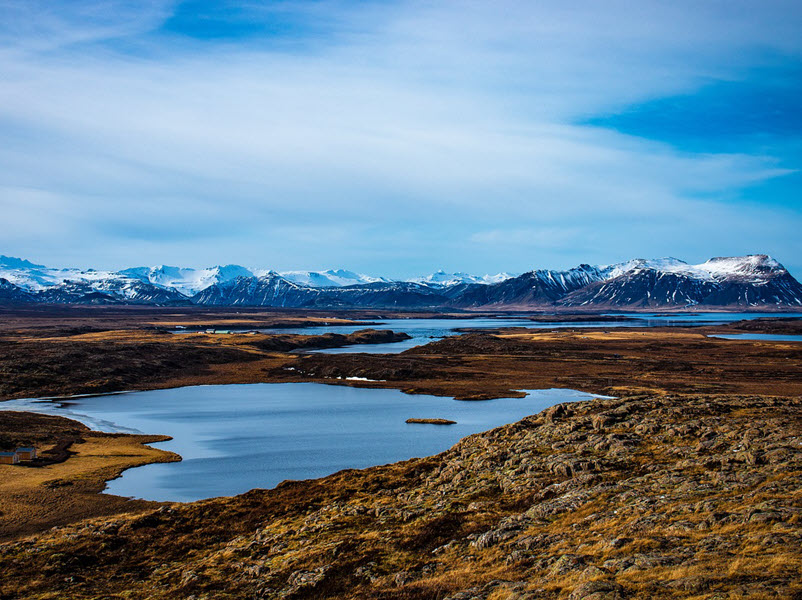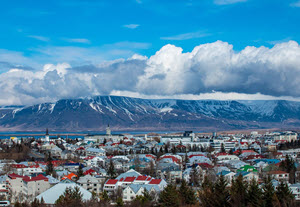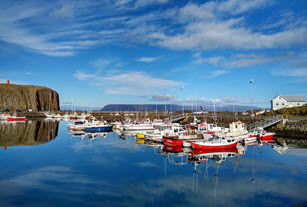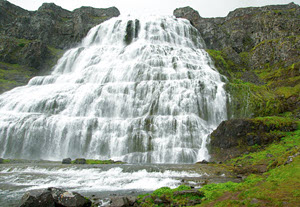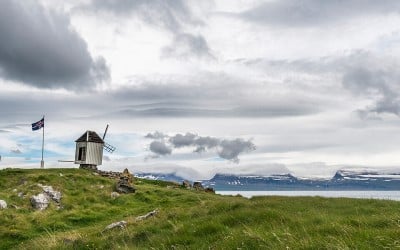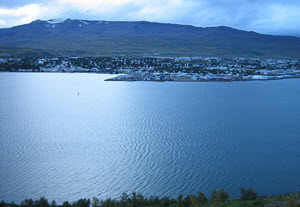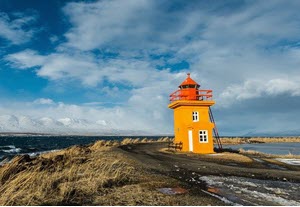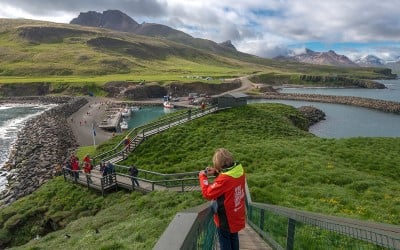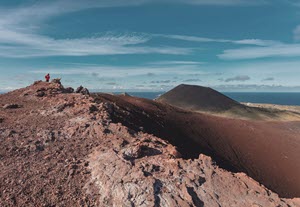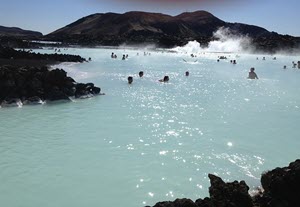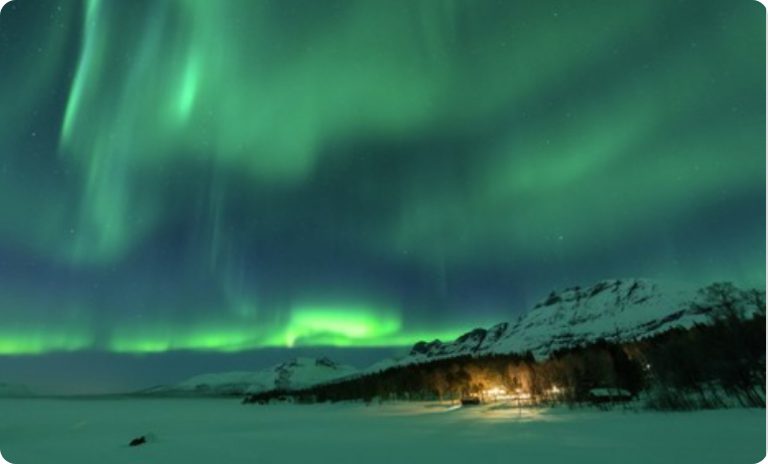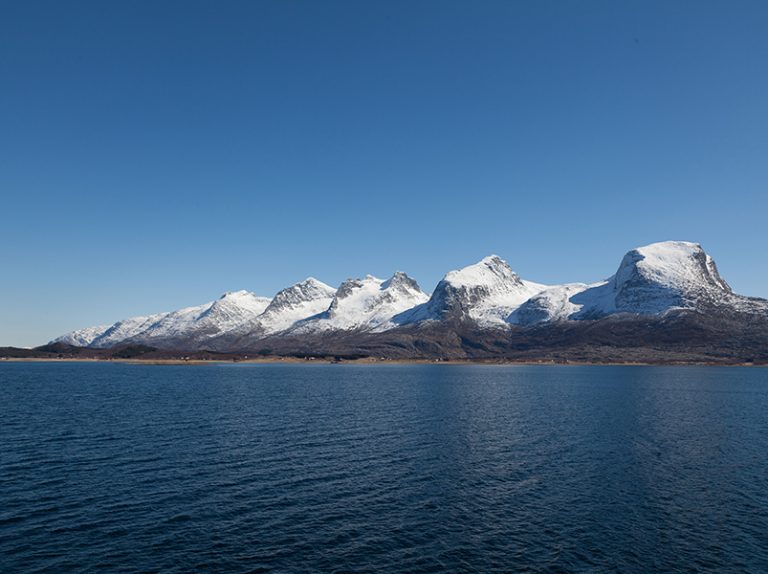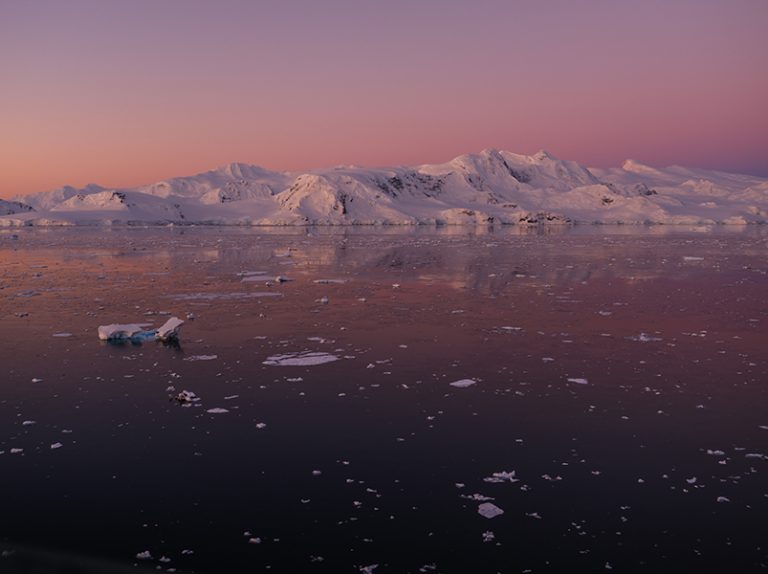Our first stop is Stykkisholmur, pronounced ‘Stikkish – holmur’, a small fishing town surrounded by views of innumerable islets in the picturesque Breiðafjörður Bay. With a population of roughly a thousand people, no traffic, and a laid-back, slow pace, it gives the impression of a place where time has stood still.
Perhaps Stykkisholmur’s most defining feature is the well-preserved houses found in its old city center. Bursting with colour, they stand out in contrast to the distant mountain ranges. Ingeniously repurposed, the former library is now an art installation, the old recreation center now harbours a volcano museum, and the fish processing plant is now a restaurant that serves a delicious fish soup.
Another highlight of the town is Norwegian House, named for the Norwegian imported wood used to build it in 1832. The Regional Museum of Snæfellsnes is based here, with rotating exhibitions and handicraft on sale. For a lovely view over the town, hike to the top of the cliff with the little orange lighthouse.
Most people, however, come here to see the fantastic Snæfellsnes Peninsula National Park. It’s nicknamed ‘Little Iceland’ as everything the country has to offer can be found here, including fjords, mountains, waterfalls, volcanoes, lava fields and more.
An optional excursion to Snæfellsnes will take you to some of its most iconic sights, such as the black-sand beach at Djúpalónssandur, where – if you’re feeling energetic – you can try your hand at lifting ‘strength testing’ rocks placed there by Vikings. A word of warning though: the heaviest rock weighs 154kg!
Another stop is at the Lóndrangar basalt cliffs where huge stacks of jagged rock jut photogenically out of the sea. Interesting fact: the massive Snæfellsjökull volcano, which looms over the landscape, is the setting of the classic sci-fi novel Journey to the Centre of the Earth, by Jules Verne.
